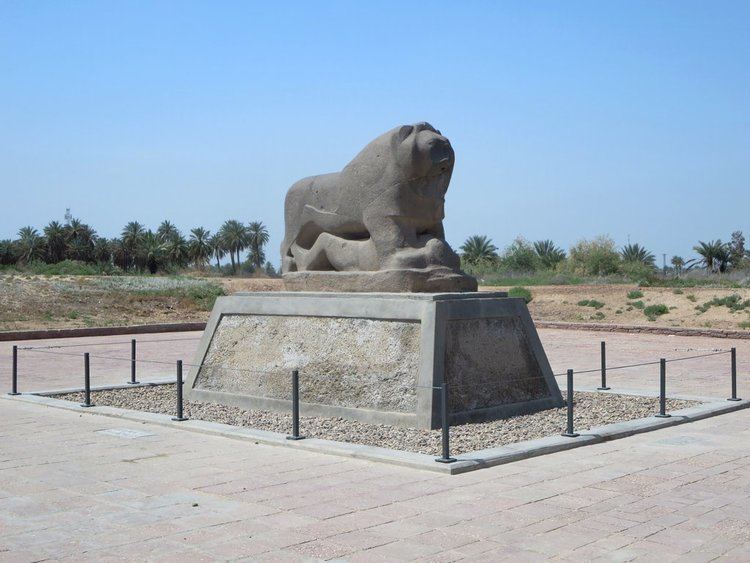 | ||
Lion of Babylon is a statue found in the ancient city of Babylon, Iraq. It was discovered in 1876 by a German archaeological mission. The statue is made out of black basalt black stone; it depicts a lion standing above a laying human. The statue is two meters in length and the platform upon which it stands is one meter.
It was initially proposed that the statue was built by the Chaldean king Nebuchadnezzar II (605-562 BC), but the style and materials of the statue have led others to ascribe it to the Hittites. It could have been part of spoils captured by the Babylonians during the campaigns of Nebuchadnezzar II.
As part of a program to prevent damage from visitors, it was announced in July 2016 that a 50-centimeter [1.6-feet] security barrier will be erected around the statue.
The statue is considered among the most important symbols of (Babylon) in particular and Mesopotamian art in general. The statue is considered a national symbol of Iraq, it has been used by several Iraqi institutions such as the Iraqi Football Association.
